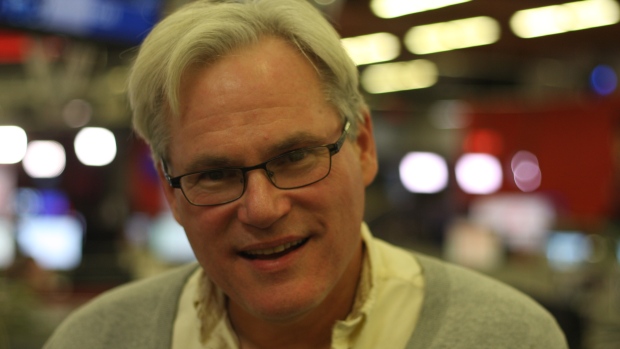By On The Coast, CBC News Posted: Nov 28, 2015
Artists at the time had to be discreet when exploring the new disease in art, a curator says
When AIDS first emerged in 1981 it profoundly affected lives, politics and society, but few people considered the impact the syndrome would have on art.
Jonathan Katz, curator for next summer’s Queer Arts Festival, was in Vancouver on Thursday for a lecture called How AIDS Changed American Art.
He says American art would not be what it is today had AIDS not existed, because the epidemic was the defining force in American art through the 1980s and ’90s.
“The artists working at this time had to negotiate a political and social context that was virulently homophobic,” he told On The Coast guest host Gloria Macarenko.
“In 1987 a Neanderthal senator by the name of Jesse Helms actually passed a rule that said that any federal funding that mentioned homosexuality or intravenous drug use was illegal. Most museums received at least some federal funding, so that meant there was a virtual silence on any AIDS or gay-related art.”
Katz is also the co-curator of a new exhibition called Art/AIDS/America at the Tacoma Museum of Art.
At that exhibit, he is exhibiting what is thought to be the first work of art about AIDS, an abstract piece made by Israeli-born artist Izhar Patkin in 1981.
“I was actually quite suspicious of it when I first encountered it, because it seemed to me impossible that the first work of art about AIDS would antedate the first press reports and published reports about a new disease,” he said. “But Patkin told a wonderful story about sitting in his dermatologist’s office and recognizing as early as 1981 that the people around him all shared the same symptoms.”
Art works about AIDS could not look like they were about AIDS
That work was Unveiling of Modern Chastity, a painting that Katz says “erupts in lesions.”
Katz says artists working at this time had to “throw their voice.” He says that most works about AIDS at that time didn’t look like they were about AIDS.
He says that while sensitive viewers were often aware of these works’ true meanings, there was a subtlety that obscured the artists’ true intentions.
Things only began to change for artists tackling AIDS once drug cocktails and treatments were developed that made the disease a chronic, but livable condition.
“But one of the sad things about that is that people understand AIDS as a thing of the past, whereas that is simply not true. People are dying every day,” he said.
AIDS brought humanity back into art
But 30 years after the AIDS epidemic first emerged, Katz believes the crisis still is affecting the creativity of artists.
“Before AIDS presented, the international standard for art was stuff like minimalism. Cold, geometric, intellectual,” he said.
“The traditional values of art making, those expressive and emotional values, AIDS brought them back.”

